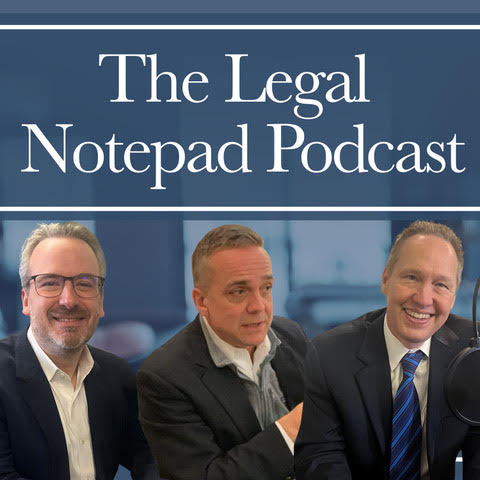Despite persistent public campaigns to prevent car accidents caused by texting and driving, we at DeCamillis & Mattingly, PLLC continue to see alarming and steady increases in personal injury and wrongful death caused by texting drivers. As wrongful death and personal injury attorneys, we regularly come face to face with victims of this tragic trend. All deaths are terrible, but it is devastating to discover your loved one died because someone was sending a smiley face or “liked” a message.
Texting and driving is now illegal in 42 states. In Kentucky, with limited exceptions, KRS §189.292 defines illegal texting and driving as follows: “while operating a motor vehicle that is in motion on the traveled portion of a roadway, write, send, or read text-based communication using a personal communication device to manually communicate with any person using text-based communication, including but not limited to communications.” Though the statute expressly forbids texting and driving, the fine can be as low as $25.00. Is this an effective deterrent? What should the fine be? What if the penalty was license suspension?
The questions are not easy to answer because the problem is much more complex than simply increasing a fine. To formulate a viable solution, it is important to first understand all aspects of the problem – which include awareness of the reality and consequences. Please review and share …
Why is texting and driving so dangerous?
Driving is not a simple task. Anytime you operate a motor vehicle, you are using 3 of your brain’s primary systems: visual, motor, and cognitive. Your prefrontal cortex (PFC) is the “cognition” area. The motor cortex (MC) is critical to sensation and motor control, and the occipital cortex (OC) processes visual information. Believe it or not, every time you send a text message, you use all 3 of these systems – the same 3 systems which should be dedicated exclusively to operating a motor vehicle. Not only does texting use valuable brain resources, studies also show that a visual task (such as texting) reduces the coordinated regulation of cardiac activity and cerebral circulation between the PFC and MC[1]. So, from a physiological perspective, texting drains resources required for driving, and it disrupts connection of your body’s vital systems.
In practical terms, what does this mean? When you send or read a text message, it takes an average of 5 seconds. 5 seconds is 4 seconds longer than the time it takes to hit a tree, another car, a guardrail, and/or a pedestrian. Moreover, if you are traveling at 55 mph – you travel approximately the length of a football field before you look up from sending or reading a text. Not only do you miss 5 seconds of critical perception and reaction time (which already takes an average of 1.5 seconds – 0.75 seconds to perceive and 0.75 seconds to react)- when you look up, your perception and reaction time is slower than average because your brain is not firing as it should. You have no time to react to the sudden maneuver of another vehicle or anything else for that matter.
Because of the triple-threat distraction of texting and driving – vision impairment, mental impairment, and manual impairment (using one or both hands to text) – a collision is 4 times more likely when texting is involved.
How dangerous is texting and driving?
- In 2016, 3,450 people were killed because of “distracted driving” (broader than, but including texting).
- 36.4% of automobile collisions involve drivers participating in a secondary task (such as texting).
- Each day in the U.S., 9 deaths and 1,000 injuries are caused by automobile collisions reported to involve a distracted driver.
How common is texting and driving?
According to Huffington Post, 49% of adults admit to texting while driving. So – if it’s not you, it’s likely the driver in front of you or behind you who is texting and driving. According to research commissioned by AT&T, 95% of drivers disapprove of distracted driving, but 71% engage in smart phone activity while driving.
Knowing the danger, why do so many people continue to text and drive?
We live in a society of immediate gratification, and we are always in a hurry. One organization identified the following as the top 5 excuses for texting and driving:
- I had to send it now
- Don’t worry! I’m good at it.
- I can text without looking.
- I was at a stoplight.
- There was nobody around![2]
Obviously – none of these excuses justify endangering a human life. Even though we academically appreciate the danger inherent in driving a motor vehicle (the single most dangerous activity most will engage in on a regular basis), we do not consciously perceive the threat when we drive. In our cars, most of us feel safe. In reality, we are anything but safe.
What can make the difference?
Awareness can work. Here are a couple text-and-drive public safety videos to share with any and all loved ones who need to see them. They are disturbing, but disturbance is needed to change such ingrained and harmful habits.
https://www.youtube.com/watch?v=sVOADQ9dBtA&feature=youtu.be
https://www.youtube.com/watch?v=L6uepXw9gZA&feature=youtu.be
So, what will have the most profound impact on texting/driving rates? Currently and unfortunately, personal experience has the greatest impact. Hopefully, however, increased awareness and a pledge can make a difference; it’s worth trying. At DeCamillis & Mattingly, PLLC, we are community attorneys with families. We would much rather prevent a death than work another wrongful death case. So here’s an effort …
Still need a New Year’s Resolution? (Or want to do the right thing anyway?) Join us at DeCamillis & Mattingly in taking the “It Can Wait” pledge, here: https://www.itcanwait.com/
Thank you for caring and sharing, and we look forward to more feedback from our friends in 2018, as we continue to share information that might help prevent or deal with collisions, injuries, and wrongful death.
[1] See Functional Connectivity Analysis of Distracted Drivers Based on Wavelet Phase Coherence of Functional Near-Infrared Spectroscopy Signals. PLoS One. 2017 Nov 27, Gongcheng Xu, Ming Zhang, Yan Wang, Zhian Liu, Congcong Huo, Zengyong Li, Mengyou Huo, and Dewen Hu.
[2] See imapctteendrivers.org


